Production of new Vipers in TAI facilities is a big bonus. TAI might even get additional orders from LM as F-16 orders continue from customers.
Latest Thread
- Bangladesh Bangladesh on 'EU watchlist', overwhelming support for interim govt wanes: ICG
- Bangladesh Bangladesh reintroduces “except Israel” inscription in passport
- Bangladesh Govt prepares to reclaim $4.52b pre-independence assets from Pakistan
- Ukraine Trizub/Trident(English) Indigenous laser weapen
- Defence Fair SITDEF PERU 2025
You are using an out of date browser. It may not display this or other websites correctly.
You should upgrade or use an alternative browser.
You should upgrade or use an alternative browser.
Is this certain? Or is it a will offered by Turkish side?Production of new Vipers in TAI facilities is a big bonus. TAI might even get additional orders from LM as F-16 orders continue from customers.
It isn't. Nothing is certain until deal is signed. We don't even know if TAI can accommodate building the new aircraft with a whole new production line, or if LM would be interested in license production, or if US is even interested in such a thing. I think modernization kits can be applied by HvKK or by TAI in Turkey, but again, we don't know the probable timeline of deliveries and we'll need to wait and see for new builds.Is this certain?
TAI is interested, they already asked LM about it and they came and inspected their facilities last year. It depends the deal, but I'd be shocked if LM refuse, they already have a lot of backlog.It isn't. Nothing is certain until deal is signed. We don't even know if TAI can accommodate building the new aircraft with a whole new production line, or if LM would be interested in license production, or if US is even interested in such a thing. I think modernization kits can be applied by HvKK or by TAI in Turkey, but again, we don't know the probable timeline of deliveries and we'll need to wait and see for new builds.
In my ideal scenario, we get kits and license, TAI builds the aircraft and HvKK applies the kits if possible, and TAI takes some of the backlog from LM, building jets for other customers, bringing in sweet cash to fund other projects.TAI is interested, they already asked LM about it and they came and inspected their facilities last year. It depends the deal, but I'd be shocked if LM refuse, they already have a lot of backlog.
But as I said, nothing is certain as of yet. Maybe first TAI built Viper leaving the facility is around the same time as the LM built one, there still needs to be subcomponents be built in US and shipped to Turkey and a new production line be built or F-35 one being converted.
US FINALLY APPROVES SALE OF F-16 BLOCK 70S TO TURKEY
- US finally approves sale of F-16 Block 70s to Turkey
By Jon Lake 16th February 2024
NEWS
After a two-year delay, Turkey has finally gained approval from the US government to acquire 40 new-build F-16C/D Block 70 Fighting Falcon multi-role fighters and 79 F-16V upgrade kits in a deal worth approximately $23bn.
Ankara has had a long-standing requirement to recapitalise and upgrade its F-16C/D fleet but was initially blocked from acquiring the new Block 70 aircraft (and upgrading its existing ‘Vipers’ to the similar F-16V standard) primarily because of Turkey’s opposition to Sweden’s accession into the NATO alliance. Some US lawmakers also cited human rights concerns, while others (playing to a powerful Greek lobby) expressed concern over Turkish-Greek tensions in the Aegean region.
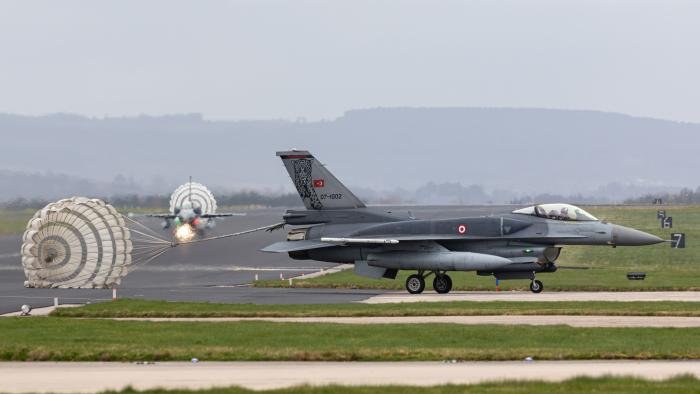
Turkish President Recep Tayyip Erdoğan had objected to Sweden joining NATO because of its perceived acceptance of Kurdish groups, which Ankara views as terrorist organisations. Sweden took a number of security steps to mollify Turkey and even tightened its anti-terrorism legislation.
The Turkish parliament ratified Sweden’s NATO accession by 287 votes to 55 on January 23, prompting US President Joe Biden to ask lawmakers to green light the F-16C/D Block 70 (and F-16V) sale, and to note his administration’s welcome of “the Turkish parliament’s ratification of Sweden’s NATO accession protocols and informing them his administration intends to formally notify Congress of the sale of F-16s to Turkey as soon as this process is complete.”
The Biden administration notified the US Congress of its approval to sell 40 F-16C/D Block 70s and related equipment to Turkey on January 26, once Ankara’s instruments of ratification of Sweden’s NATO membership had arrived in Washington DC. Turkey turned its attention to the F-16C/D Block 70 after the US expelled Ankara from the F-35 programme in 2019, citing concerns that Turkey’s purchase of the Russian-made S-400 (SA-21 Growler) surface-to-air missile (SAM) system posed an unacceptable security risk. Following the approval of Turkey’s F-16 Block 70 deal, Washington immediately notified Congress of its intention to sell 40 F-35A fighters to Greece.
AFM
Mate, you should really check what has been posted and discussed beforehandUS FINALLY APPROVES SALE OF F-16 BLOCK 70S TO TURKEY
- US finally approves sale of F-16 Block 70s to Turkey
By Jon Lake 16th February 2024
NEWS
After a two-year delay, Turkey has finally gained approval from the US government to acquire 40 new-build F-16C/D Block 70 Fighting Falcon multi-role fighters and 79 F-16V upgrade kits in a deal worth approximately $23bn.
Ankara has had a long-standing requirement to recapitalise and upgrade its F-16C/D fleet but was initially blocked from acquiring the new Block 70 aircraft (and upgrading its existing ‘Vipers’ to the similar F-16V standard) primarily because of Turkey’s opposition to Sweden’s accession into the NATO alliance. Some US lawmakers also cited human rights concerns, while others (playing to a powerful Greek lobby) expressed concern over Turkish-Greek tensions in the Aegean region.
On January 26, the US formally approved the sale of 40 new-build F-16C/D Block 70s to Turkey, as well as 79 upgrade kits to enable the Turkish Air Force's existing F-16C/D fleet to F-16V standard. Ben Stanley Hall
Turkish President Recep Tayyip Erdoğan had objected to Sweden joining NATO because of its perceived acceptance of Kurdish groups, which Ankara views as terrorist organisations. Sweden took a number of security steps to mollify Turkey and even tightened its anti-terrorism legislation.
The Turkish parliament ratified Sweden’s NATO accession by 287 votes to 55 on January 23, prompting US President Joe Biden to ask lawmakers to green light the F-16C/D Block 70 (and F-16V) sale, and to note his administration’s welcome of “the Turkish parliament’s ratification of Sweden’s NATO accession protocols and informing them his administration intends to formally notify Congress of the sale of F-16s to Turkey as soon as this process is complete.”
The Biden administration notified the US Congress of its approval to sell 40 F-16C/D Block 70s and related equipment to Turkey on January 26, once Ankara’s instruments of ratification of Sweden’s NATO membership had arrived in Washington DC. Turkey turned its attention to the F-16C/D Block 70 after the US expelled Ankara from the F-35 programme in 2019, citing concerns that Turkey’s purchase of the Russian-made S-400 (SA-21 Growler) surface-to-air missile (SAM) system posed an unacceptable security risk. Following the approval of Turkey’s F-16 Block 70 deal, Washington immediately notified Congress of its intention to sell 40 F-35A fighters to Greece.
AFM
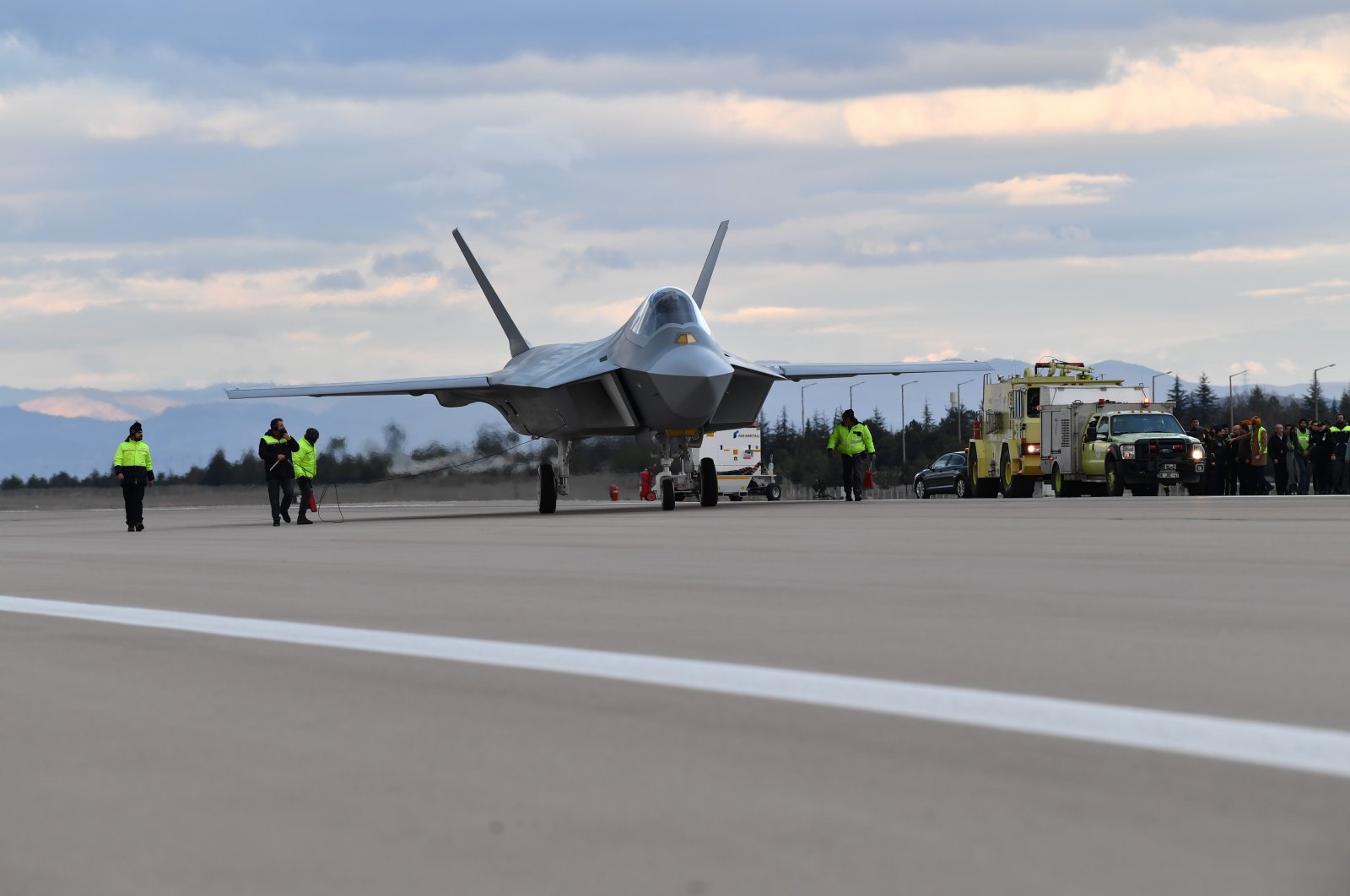
Turkish engine maker says fighter jet power unit almost ready
Türkiye's top engine manufacturer on Tuesday said a unit that will power the nation's first domestically developed fighter jet is almost ready,...
TURKISH TOUGH GUYS
- Aviation Features
- TURKISH TOUGH GUYS
By Giovanni Colla and Rich Cooper 1st August 2019
FEATURE
Three years after the drama of an attempted military coup, the Turkish Air Force’s ‘Anatolian Eagle’ exercise at Konya air base was held for two weeks in June with the host nation welcoming participants from Italy, Jordan, Pakistan, Qatar and the US.
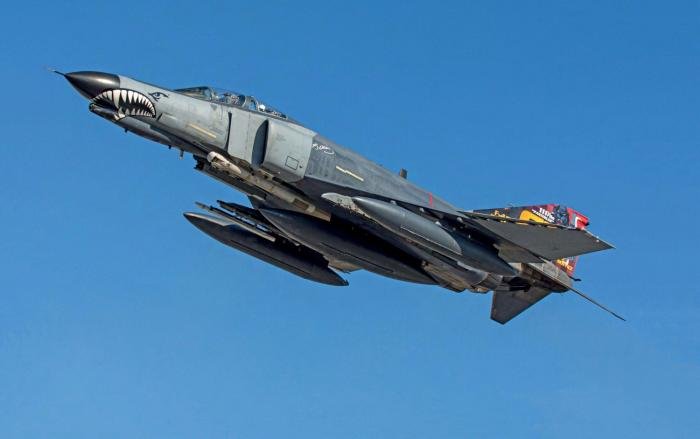
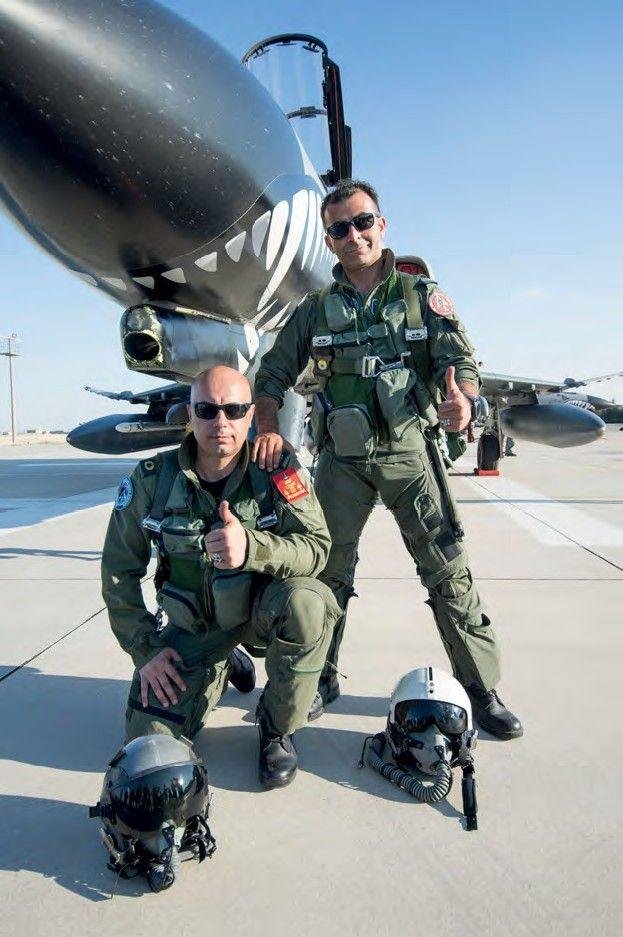
TURKEY IN JUNE, in full flying kit, is not for the fainthearted. Amid sweltering conditions, the Turkish Air Force (Türk Hava Kuvvetleri, THK) held its always hotly anticipated ‘Anatolian Eagle’ once again this summer. While exercises are commonplace and it’s all about teamwork — or interoperability, as the current buzzword goes — events such as this offer infrequent opportunities to get up close to some rare metal. Turkey is an important strategic country given its position as a link between Europe and the Middle East, and it has dramatically increased its training facilities over the last decades while gradually modernizing its armed forces to protect itselffrom the numerous pockets of instability in and around its borders. Leaving aside recent global publicity of US and Russian concerns about Turkey’s purchase of S-400 missiles alongside development of its F-35 program — Konya is one of the of the few THK bases that allows media access, located about 150 miles (240km) south of Ankara on the Anatolian plateau. The resident exercise dates back to June 2001 and to date some 14 countries have joined the THK for ‘Anatolian Eagle’ including Belgium, France, Germany, Israel, Italy, Jordan, the Netherlands, Pakistan, Qatar, Saudi Arabia, Spain, the United Arab Emirates, the UK and the US.
‘Anatolian Eagle’ operates in a similar way to the famous US ‘Red Flag’ exercise, and essentially features ‘Blue Force’ good guys against bandit ‘Red Air’ opponents. The latter were Turkish F-16s dedicated to the role while ‘real world’ scenarios were played out on a daily basis. For the 2019 edition, the scenario was a ‘Red’ country trying to take control of an oil port inside the friendly nation, thus opening up a wide variety of air combat tactics in a simulated conflict scenario. Maj Turgay Tümer told reporters that ‘Anatolian Eagle’ is ‘considered a laboratory in which needs are determined and solutions are developed along with continuously updated scenarios and missions played out with modern technology’.
Typical missions consisted of an attack by the ‘Blue’ team in a combined air operation (COMAO) against tactical and strategic targets within the area controlled by the ‘Red’ team, which was defended by fighters and a ground-based air defense (GBAD) systems.
A Command and Control Center (CCC) acted as the nerve center for the missions, collating information from range data pods carried by the fighters and also ground and airborne radar systems to enable a real-time picture of the operation. This is where it was decided which targets were successfully prosecuted and where air-to-air missile ‘shots’ were validated.
The main operating airspace went from ground level up to 50,000ft with zero fiight restrictions — but importantly it was located almost adjacent to Konya, thus minimizing transit time and maximizing ‘play’ time.
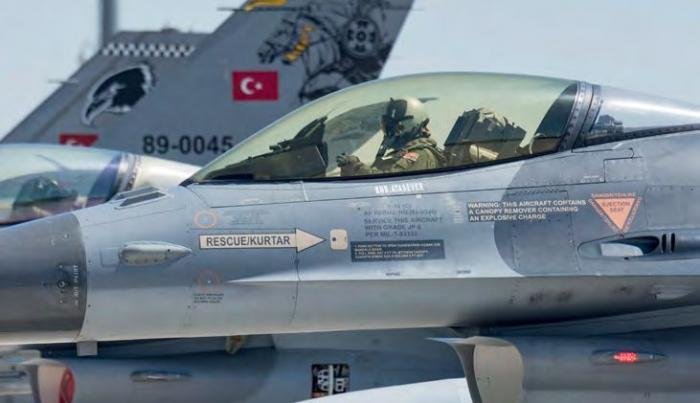
A very rare glimpse of one of the THK’s four C-160D ELINT/COMINT platforms as it gets airborne at Konya. Rich Cooper
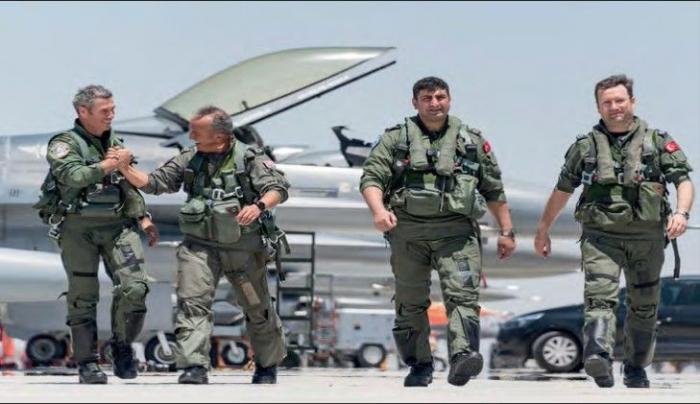
’Viper’ pilots chat enthusiastically as they walk back to ‘Anatolian Eagle’ headquarters. Rich Coope
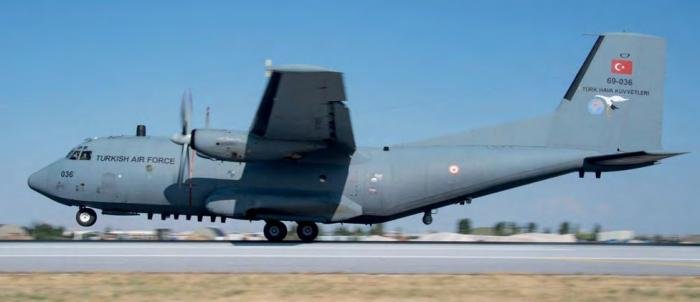
Jets mass at the end of runway (EOR) as the morning combined air operation (COMAO) gets under way. Rich Cooper
The players
This year’s ‘Anatolian Eagle’ involved participation from Italy, Jordan, NATO, Pakistan, Qatar, Turkey and the US, making a total number of more than 450 foreign and around 600 Turkish personnel. The home team consisted of 34 aircraft, including six F-4E-2020s assigned to 111 Filo ‘Panterler’ from Eskisehir; F-16C/D Block 30s and 52+ from 113, 132 (‘Red Air’), 152 and 161 Filos, plus E-7T airborne early warning and control aircraft, C-130B/Es, CN235s, KC-135R tankers plus, significantly, one of four THK C-160D Transalls from 221 Filo at Keyseri that are equipped for signals and communication intelligence (SIGINT/ COMINT) as well as imaging and radio frequency jamming.

With the cavernous E-7T hangars in the background, an F-16D launches as an F-4E-2020 makes its way to the runway. Rich Cooper
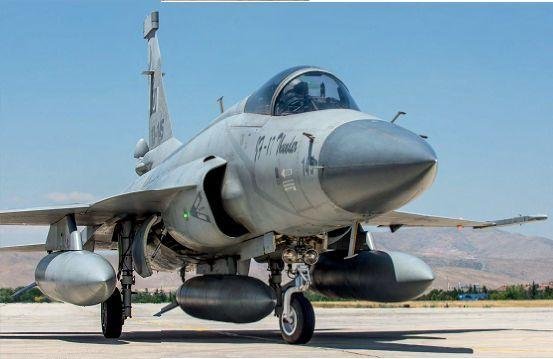
Pakistani JF-17 Thunders provided the exotic element of this year’s event, coming form the new No 28 ‘Phoenix’ Squadron. Giovanni Colla

A Royal Jordanian Air Force (RJAF) F-16BM flares for landing with speed brakes open. Giovanni Colla
Foreign participants included three F-16AM/BMs from the Royal Jordanian Air Force, five JF-17 Thunders from the Pakistan Air Force’s No 28 ‘Phoenix’ Squadron, three AMX from the Italian Air Force’s 51° Stormo, six US Air Force F-15E Strike Eagles from RAF Lakenheath’s 494th Fighter Squadron (FS) ‘Panthers’, a single C-130J and C-17A Globemaster III from the Qatar Emiri Air Force and one NATO E-3 AWACS.
Unlike previous ‘Anatolian Eagles’, where the typical day included two missions — ‘Eagle 01’ and ‘Eagle 02’ — this year only saw a morning COMAO, with afternoons dedicated to training customized according to particular needs. Maj Tümer said: ‘For example, the Italian Air Force asked to fly and train with Turkish F-4E Phantoms at our nearby range for electronic warfare missions and to attack GBAD systems and to fly air-to-air missions against Turkish F-16s on the last day of exercise, while the USAFE requested its afternoon training to concentrate on lowlevel flying alongside the Turkish Air Force.’

The unmistakeable lines of the F-4E- 2020. Just one squadron in the THK still operates these magnificent beasts, although this example retains the markings of 171 Filo ‘Korsan’. Rich Cooper
It’s a wrap
In total, 389 sorties were flown during the two weeks and the signs were that ‘Anatolian Eagle’ remains a meaningful test of the aircrews, with some relative newcomers in the shape of the JF-17s able to take a lot away from the experience. The geographic positioning of Turkey means that participating air arms with very different procedures and methodologies are able to come together and reap the benefits. ‘I love meeting all of our international partners,’ said Maj Allison Mandas, a Weapons Systems Officer with the F-15Es of the 494th FS. ‘Exercises such as this provide an opportunity to share lessons learned, tactics and techniques so that we all have a shared operating picture for when conflict arises.’
Another ‘Panther’, 1st Lt Mike Nunez, added: ‘It’s been exciting to see the way they’ve looked at a tactical problem and then solved it — in just as valid a way as we would do it in the USAF, but perhaps employing a different method. It makes me confident that we can address any crisis that arises based on how well we come together at exercises like this.’
GROUNDBASED AIR DEFENSE
During the two weeks of exercise, the scenarios were deliberately varied and changeable. The threats, in addition to the air component provided by eight F-16C/Ds of the local 132 Filo, included some fairly ancient systems such as SA-6 ‘Gainful’, SA-8 ‘Gecko’ and SA-11 ‘Gadfly’, plus some more modern systems such as the SA-10 ‘Grumble’ and SA-15 ‘Gauntlet’.

Originally published in Combat Aircraft Journal
The plane is ...!?
The plane is ...!?
KC135. We can use them as transports as well.

To complete the image, here's another row...
Edit: Didn't merge it with the original image out of respect for the creator.
Happy Sunday folks. The weather is good, the sky is clear.
Last edited:
You have no idea what such 19 second montages do to the heart of an aviation buff who had the longing for a Turkish flying platform since their childhood.Happy Sunday folks. The weather is good, the sky is clear.
And blood touched the wolf's tooth.
ANKA's first flight was hard to top emotionally, except when KAAN was shown, that was in turn topped by its maiden flight. Indescribable!






